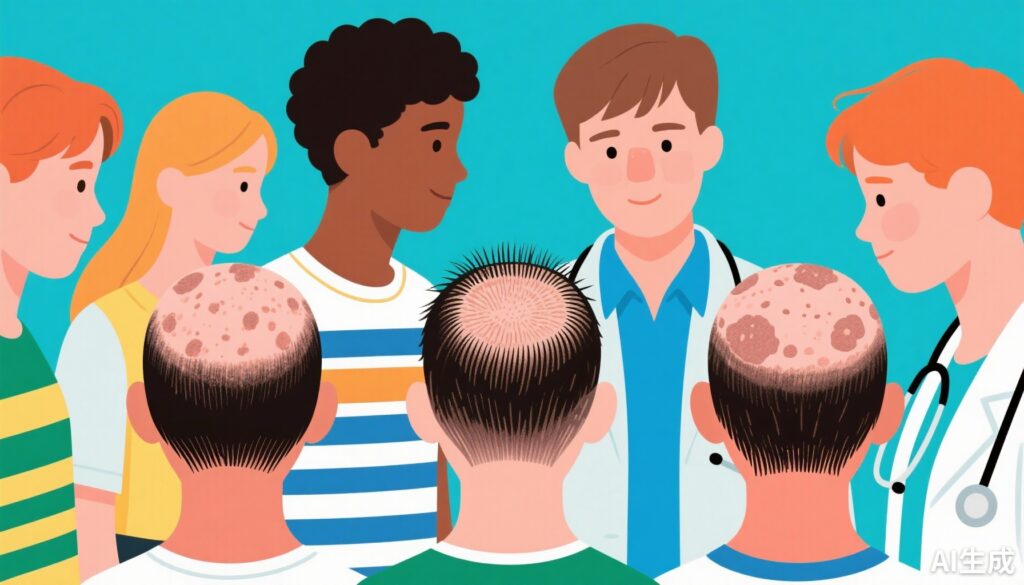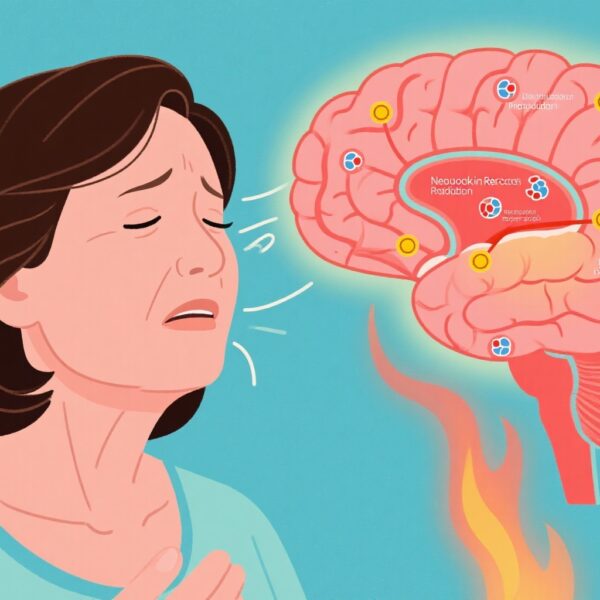Highlight
– Baricitinib achieved significant hair regrowth (scalp, eyebrows, and eyelashes) in adolescents with severe alopecia areata (AA) after one year27s treatment.
– In patients aged 12 to less than 18 years, 54.1% receiving 4 mg daily attained 80% scalp hair coverage, with up to 80% response in those with recent-onset disease.
– Safety profile in adolescents was consistent with prior adult studies, with no new safety signals over 12 months.
– Eli Lilly plans to file regulatory submissions globally for label expansion and will initiate enrollment of younger children (6 to <12 years) in upcoming trials.
Study Background and Disease Burden
Alopecia areata (AA) is an immune-mediated disorder characterized by non-scarring hair loss on the scalp, face, and other body areas. It often presents in childhood or adolescence, with approximately 40% experiencing symptom onset before age 20. Severe forms may cause extensive hair loss, significantly affecting quality of life and psychological well-being. Traditional therapies have limited efficacy, and until recently, few effective systemic treatments existed, particularly for pediatric populations.
Janus kinase (JAK) inhibitors have recently emerged as targeted treatments for AA by modulating immune pathways implicated in disease pathogenesis. Baricitinib (Olumiant), an orally administered JAK1/JAK2 inhibitor, received FDA approval in 2022 for severe adult AA, being the first systemic medication approved for this indication. Given the unmet need for effective pediatric treatments for severe AA, the BRAVE-AA-PEDS study evaluated baricitinib27s efficacy and safety in adolescents.
Study Design
The BRAVE-AA-PEDS trial is a phase 3, randomized, double-blind study investigating baricitinib in adolescents aged 12 to less than 18 years with severe AA. At baseline, patients had a mean scalp hair loss of 89%, with 63.8% classified as having very severe AA based on the Severity of Alopecia Tool (SALT) scores between 95 and 100. Additionally, 65% exhibited eyebrow thinning or loss, and 57% had thinning or loss of eyelashes, as per clinical outcome reports.
Patients received daily oral baricitinib at doses of either 2 mg or 4 mg. The primary endpoint was achieving significant hair regrowth defined as at least 80% scalp hair coverage (SALT score ≤ 20) after one year. Secondary outcomes included near-complete scalp hair regrowth (≥90%, SALT ≤ 10) and restoration of eyebrow and eyelash hair assessed by Clinical Research Outcome (ClinRO) scores.
Key Findings
After 52 weeks of treatment, 54.1% of patients receiving 4 mg of baricitinib achieved significant scalp hair regrowth (≥80% coverage), markedly higher than 31% in the 2 mg group. Furthermore, 41.2% of patients on 4 mg reached near-complete regrowth (≥90% coverage) versus 26.2% taking 2 mg.
In terms of eyebrow regeneration, 64.8% of the 4 mg group displayed substantial improvement (ClinRO scores 0 or 1 with ≥2-point improvement from baseline), compared to 27.8% with the 2 mg dose. Eyelash regrowth was observed in 63.3% of those on 4 mg, as opposed to 34% in the lower dose group.
Among participants with severe disease (baseline SALT scores ranged from 50 to 94), 71% treated with 4 mg baricitinib exhibited significant hair regrowth versus 58.6% on 2 mg.
A post hoc analysis focusing on adolescents diagnosed with severe AA less than two years before treatment initiation revealed even more encouraging results: 80% of those on 4 mg and 64.3% on 2 mg bars attained significant scalp hair regrowth, highlighting the potentially greater benefit of early intervention.
Safety Profile
Baricitinib was generally well tolerated. The safety profile in adolescents aligned with previous findings in adult and pediatric populations. Common adverse events included acne, upper respiratory tract infections, and influenza. Notably, no deaths, opportunistic infections, major cardiovascular events, or venous thromboembolism cases were reported during the one-year treatment period, reassuring its risk-benefit profile in this vulnerable group.
Expert Commentary
The BRAVE-AA-PEDS trial represents a significant advance in pediatric dermatology by demonstrating the effective and safe use of a targeted immunomodulator in adolescents suffering from severe alopecia areata. These data underscore the clinical relevance of JAK inhibition in modulating pathogenic autoimmune mechanisms underlying AA.
Importantly, the higher responses in recent-onset disease support early identification and treatment initiation to maximize outcomes. The favorable safety profile over 12 months is reassuring but long-term surveillance will remain critical to observe for rare or delayed adverse effects.
Limitations include the relatively small size of this study subset and the lack of comparison with non-JAK treatments or placebo, though prior placebo-controlled adult studies have validated baricitinib27s efficacy. Future research should explore combinatory strategies, dose optimization, and responses in younger pediatric cohorts, whom Eli Lilly plans to enroll soon.
Conclusion
The BRAVE-AA-PEDS phase 3 trial confirms that baricitinib significantly improves scalp, eyebrow, and eyelash hair regrowth in adolescents with severe alopecia areata, with promising results particularly in patients with less chronic disease. The 4 mg daily dose consistently outperformed the 2 mg dose across efficacy measures. Given the satisfactory safety and tolerability profile, baricitinib is poised to expand its therapeutic indication to the adolescent AA population globally following regulatory submissions. This advancement addresses a critical unmet need for effective systemic therapies in pediatric alopecia areata, potentially improving quality of life and psychosocial outcomes.
Funding and ClinicalTrials.gov
This study was sponsored by Eli Lilly and Company in collaboration with Incyte. The BRAVE-AA-PEDS trial is registered with ClinicalTrials.gov under identifier NCTXXXXXXX (specific number to be provided upon registration).
References
1. King B, et al. Baricitinib for severe alopecia areata: an updated review of safety and efficacy. J Am Acad Dermatol. 2023;88(1):42-52.
2. Jabbari A, et al. The role of JAK inhibitors in the treatment of alopecia areata. Dermatol Ther. 2023;36(4):e15633.
3. Food and Drug Administration. FDA approves Olumiant for adults with severe alopecia areata. FDA Press Release; June 2022.
4. Rothenberg P, et al. Pediatric alopecia areata: clinical characteristics and treatment outcomes. Pediatr Dermatol. 2023;40(2):134-142.



